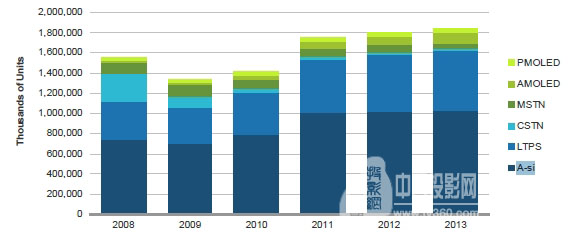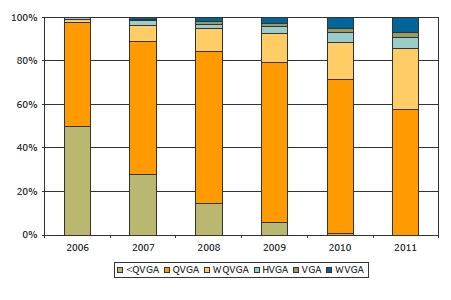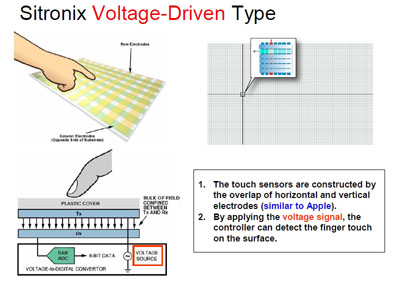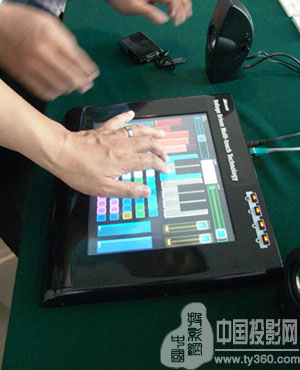Abstract: At the Mobile Handheld Display Technology Conference 2009 hosted by Shenzhen Creative Times, industry leaders including Nokia, Innova, Tianma Microelectronics, Henkel, Solomon Systech, Leadis, New Tusi Technology and iSuppli, DisplaySearch, etc. Experts from well-known analysts gathered together to conduct an in-depth analysis of the status quo and future of mobile display technology, from which one can take a glance at the future development trend of mobile display technology.
Just a few years ago, desktop devices were still the main application areas of display technologies, but now mobile displays have shown a leading edge. Various emerging technologies are always the first to be applied to mobile display devices, in addition to continuously improving display resolution. In addition to improving display quality, mobile displays continue to apply new materials and new technologies to reduce power consumption and improve user experience. How is the future development of mobile display technology? Which new technologies will become the king of mobile display?
First, the mobile display technology: TFT is still the mainstream of the future, OLED progress is slow Although OLED technology has many advantages such as low power consumption, active light, lighter, thinner, and obtained many manufacturers support, such as active matrix organic light emitting diode only The panel makers (AMOLED) have fans including Samsung Electronics, Samsung SDI, and LG Philips, but Vinita Jakhanwal, principal analyst at iSuppli, still believes that TFT is still the king of the future, including amorphous silicon TFTs (A-Si TFTs) and low temperatures. Low temperature poly-silicon (LTPS) thin film transistor liquid crystal displays will dig most of the mobile display market in the next few years. As shown in Figure 1.
She stressed that the share of CSTN technology in the future will be drastically reduced, but some experts have objections to this statement, they believe that the future there is a gradient of demand differences, CSTN must have demand, will not exit the display market.
Liu Qingquan, deputy director of the marketing department of Shanghai Tianma Microelectronics Co., Ltd., agrees with her analysis of the OLED market. He believes that the current industry investment in OLED is not enough, resulting in the cost of the OLED supply chain is difficult to reduce, so the cost of OLED and the TFT difference He even asserted that "In the next five years, there will still be a gap between OLED costs and TFT!"
Second, the mobile display resolution: QVGA said the king is driven by mobile TV and Internet reading demand, mobile display to a higher definition development, Vinita that the future support for QVGA format display demand has grown rapidly and become mainstream, and WQVGA display The screen is also in great demand. "In Japan, WQVGA is moving to WVGA."
Third, the mobile display man-machine interface: touch technology to fight the flow, capacitive touch was born in the 70s of the last century touch screen technology, under the impetus of the iPhone mobile cool application has been rapidly popularized from the initial industrial military to consumer In the electronics field, and moving from small-screen applications to large-screen applications, Qian Jinwei, deputy general manager of Etron Electronics Co., Ltd., believes that touch technology as a new human-computer interaction model will inevitably lead to more innovative applications. DisplaySearch believes that despite the economic crisis, the global touch screen market will continue to grow by nearly 20% in 2009, and will maintain an annual growth of 15% in the next 5 years! Driven by the demand of the market, touch technology has advanced by leaps and bounds, and emerging technologies have emerged. According to statistics, there are currently more than 10 kinds of touch screen technologies in the world. The main touch technologies are resistive, capacitive, surface acoustic wave, infrared, optical, inductive, and so on. In terms of market share, resistance still holds the leading position and occupies more than 50% of the market, followed by capacitive, accounted for nearly 28% of the market.
However, because resistive touch screens have the disadvantages of large power consumption, low sensitivity, and poor light transmission, the participating experts agreed that capacitive multi-touch technology will be the focus of future development. “However, current touch technologies have more or less defects.†Qian Jinwei pointed out: “For example, resistive touch technology consumes power even when it is not touched, and resistive touch screens are The challenge is more difficult to achieve a very fine border design, which poses a challenge to the design of electronic products.Since capacitance sensing is used to complete the detection of capacitance changes, it must be touched by the human finger to work, if the user wears a glove or a touch screen Water droplets, etc. will cause a decrease in touch accuracy."
To address these challenges, Etron Electronics has for the first time announced a novel touch technology, the piezoelectric touch technology. “Piezoelectricity is similar to Apple’s structure in glass structure, but the difference is in using a voltage source. And digitally complete the conversion of the voltage source signal, this can not consider the change of ITO resistance value, so the application size range of the touch screen will be very big, can apply 2 inches to 100 inches of screens! â€
The figure below shows the principle of piezoelectric touch technology
As the leader of the touch screen IC industry, General Manager Chen Yuan of Xintuo Electronics Technology believes that capacitive touch will become the mainstream of the future. He discussed some of the new technologies of Tushin from the perspective of the overall solution of the touch screen. He disclosed the new process. Si currently focuses on the touch screen technology is to make PET thinner, to develop a larger touch screen, such as more than 10 inch touch screen, to achieve more recognition. “Currently, finger recognition includes single-finger operation, two-finger operation, and five-finger and ten-finger mode. In the future, there will be single-point, double-click, long-press recognition, etc.†He stressed that “there is also a problem of solving the interference problem of the touch screen. For example, eliminate ESD, EMI, and environmental humidity and temperature effects."
At present, capacitive touch technology is divided into self-capacitance and mutual capacitance. Dr. Ye Zhaoping, vice president of Solomon Technology Co., Ltd. analyzed the technical characteristics of mutual-capacitive touch technology, and pointed out that Solomon Technology believes that mutual-capacitance is the future. Direction of development.
The future development of touch technology as a new human-computer interaction method, touch technology must maintain a sustainable state of development, the future of touch technology is how? An Rongbang thinks that he should consider the real experience touch brings to the user. He pointed out that “if we analyze the composition of the touch, it has a lot of physical movement. If we want to push the user’s feeling to the extreme, the physical movement is Certainly necessary. Because of the simple logic, when I press one thing, I hope it is really pressed.†He also expressed the hope that the touch screen could improve the reliability and anti-jamming problems.
For such a demand, Chen Yuan believes that it represents the future development of touch technology. "The touch screen should also have a touch-feedback function that lets you press it down and really feel it is a thing." He pointed out, "Another new touch technology should be able to achieve proximity sensing, allowing users to use some functions without turning on the machine."
Qian Jinwei said that the current touch technology is basically 2D technology. In the future, 3D touch technology will be born. “3D touch is 3D information that can perceive your gestures, so that you can do some gestures to achieve the screen. control."
IV. Mobile Display Challenge: Demand Creation Opportunities As mobile communications enters the 3G era, consumers place higher demands on the content and display quality of mobile display devices. Of course, mobile displays also face more severe challenges as the world The leader of mobile phone manufacturing, Nokia has no doubt about the mobile display technology has a sufficient right to speak, from the Nokia China (Investment) Co., Ltd. An Rongbang from the perspective of the whole machine to talk about the demand for display devices, he pointed out: "At present The mobile display problems include: 1. The lack of functionality of the LCD screen, such as black screen, flicker, stains, etc. 2. Reliability design problems - ensuring that the display screen is not physically damaged, 3. System design and display module production; ESD issues; 5, the reliability of flexible display protection, etc..†He pointed out that the current mobile display is facing seven major challenges that require the industry to work together to overcome.
1. The reliability design becomes more and more difficult 2. The proportion of display components costs high 3. The product integration is limited by the display device 4. The correlation with the defective product rate is high 5. How to realize the physical sensation of touch?
6. Development of display screens and mismatch of mobile phone functions 7. Contradictions between small screens and big fingers 5. Mobile Display Industry Chain: Difficulty in Supply Management Increasingly Liu Qingquan believes that under the influence of the economic crisis, LCD industry chain “disordered†phenomenon is serious. : Realizing that the supply of display components is in short supply. "From the first quarter, we observed that some IC chips were out of stock, and some backlights were still out of stock. However, by the second quarter, materials had been filled, but other materials were found missing. Goods, so how to coordinate demand with supply is a challenge." He stressed that "after the financial turmoil, the entire industry chain has created an out-of-order condition that may result in the shipment of glass and module shipments. However, customers cannot ship products because there may be no shipment of mobile phone kits. This situation will continue in the future. In the LCD industry chain, supply chain response speed, vertical integration, and key component mastering are all important links. ."
Dr. Zhou Luliang, an application engineer at Henkel Technologies and Dr. Ken Lee, CTO and Executive Vice President of Leadis, shared the latest developments in the technology of touch screen technology, such as adhesives and ITO. Zhou Luliang pointed out that at present, many tapes are also used for touch screens on mobile phones, and problems with loose bonding may arise. If Henkel's adhesive products are used, these problems can be easily overcome. In addition, Henkel also offers polyurethane hot melt adhesives for applications such as housings and screen bonding, which have a very high strength and can extend the life of mobile devices.
Six, mobile display technology: What can we expect in the future?
Dr. Li Zili, consultant of Chemlmage Corporation, who has devoted himself to the display technology research for many years, believes that the new requirements of new applications will continue to promote the development of mobile display technology. The display technology will achieve new breakthroughs in size, UI and power consumption tradeoffs. He Point out that the emerging display technologies we can expect in the future are:
1, virtual display technology - that is, through the way to wear glasses to browse images.
2, foldable display technology - through the stack, the size of the small screen display;
3. Curlable Display Technology - This is actually a kind of flexible display technology. By turning the display screen to a large display screen, many handset manufacturers are very optimistic about the future of the technology.
4, projection display technology - the use of projection to produce an enlarged display, Samsung has launched a mobile phone with this feature.
5, bi-stable display technology 6, coherent modulation display (IMOD), time-multiplexed optical shutter technology (TMOS), DMS (Digital Micro Shutter (TM) (digital micro shutter)), electrowetting display (EWD) and electronics Paper Display (EPD) display technology.
Just a few years ago, desktop devices were still the main application areas of display technologies, but now mobile displays have shown a leading edge. Various emerging technologies are always the first to be applied to mobile display devices, in addition to continuously improving display resolution. In addition to improving display quality, mobile displays continue to apply new materials and new technologies to reduce power consumption and improve user experience. How is the future development of mobile display technology? Which new technologies will become the king of mobile display?
First, the mobile display technology: TFT is still the mainstream of the future, OLED progress is slow Although OLED technology has many advantages such as low power consumption, active light, lighter, thinner, and obtained many manufacturers support, such as active matrix organic light emitting diode only The panel makers (AMOLED) have fans including Samsung Electronics, Samsung SDI, and LG Philips, but Vinita Jakhanwal, principal analyst at iSuppli, still believes that TFT is still the king of the future, including amorphous silicon TFTs (A-Si TFTs) and low temperatures. Low temperature poly-silicon (LTPS) thin film transistor liquid crystal displays will dig most of the mobile display market in the next few years. As shown in Figure 1.

She stressed that the share of CSTN technology in the future will be drastically reduced, but some experts have objections to this statement, they believe that the future there is a gradient of demand differences, CSTN must have demand, will not exit the display market.
Liu Qingquan, deputy director of the marketing department of Shanghai Tianma Microelectronics Co., Ltd., agrees with her analysis of the OLED market. He believes that the current industry investment in OLED is not enough, resulting in the cost of the OLED supply chain is difficult to reduce, so the cost of OLED and the TFT difference He even asserted that "In the next five years, there will still be a gap between OLED costs and TFT!"
Second, the mobile display resolution: QVGA said the king is driven by mobile TV and Internet reading demand, mobile display to a higher definition development, Vinita that the future support for QVGA format display demand has grown rapidly and become mainstream, and WQVGA display The screen is also in great demand. "In Japan, WQVGA is moving to WVGA."

Future mobile phone display resolution demand forecast
Third, the mobile display man-machine interface: touch technology to fight the flow, capacitive touch was born in the 70s of the last century touch screen technology, under the impetus of the iPhone mobile cool application has been rapidly popularized from the initial industrial military to consumer In the electronics field, and moving from small-screen applications to large-screen applications, Qian Jinwei, deputy general manager of Etron Electronics Co., Ltd., believes that touch technology as a new human-computer interaction model will inevitably lead to more innovative applications. DisplaySearch believes that despite the economic crisis, the global touch screen market will continue to grow by nearly 20% in 2009, and will maintain an annual growth of 15% in the next 5 years! Driven by the demand of the market, touch technology has advanced by leaps and bounds, and emerging technologies have emerged. According to statistics, there are currently more than 10 kinds of touch screen technologies in the world. The main touch technologies are resistive, capacitive, surface acoustic wave, infrared, optical, inductive, and so on. In terms of market share, resistance still holds the leading position and occupies more than 50% of the market, followed by capacitive, accounted for nearly 28% of the market.

Various touch technology market share
However, because resistive touch screens have the disadvantages of large power consumption, low sensitivity, and poor light transmission, the participating experts agreed that capacitive multi-touch technology will be the focus of future development. “However, current touch technologies have more or less defects.†Qian Jinwei pointed out: “For example, resistive touch technology consumes power even when it is not touched, and resistive touch screens are The challenge is more difficult to achieve a very fine border design, which poses a challenge to the design of electronic products.Since capacitance sensing is used to complete the detection of capacitance changes, it must be touched by the human finger to work, if the user wears a glove or a touch screen Water droplets, etc. will cause a decrease in touch accuracy."
To address these challenges, Etron Electronics has for the first time announced a novel touch technology, the piezoelectric touch technology. “Piezoelectricity is similar to Apple’s structure in glass structure, but the difference is in using a voltage source. And digitally complete the conversion of the voltage source signal, this can not consider the change of ITO resistance value, so the application size range of the touch screen will be very big, can apply 2 inches to 100 inches of screens! â€
The figure below shows the principle of piezoelectric touch technology

The principle of piezoelectric touch technology
As the leader of the touch screen IC industry, General Manager Chen Yuan of Xintuo Electronics Technology believes that capacitive touch will become the mainstream of the future. He discussed some of the new technologies of Tushin from the perspective of the overall solution of the touch screen. He disclosed the new process. Si currently focuses on the touch screen technology is to make PET thinner, to develop a larger touch screen, such as more than 10 inch touch screen, to achieve more recognition. “Currently, finger recognition includes single-finger operation, two-finger operation, and five-finger and ten-finger mode. In the future, there will be single-point, double-click, long-press recognition, etc.†He stressed that “there is also a problem of solving the interference problem of the touch screen. For example, eliminate ESD, EMI, and environmental humidity and temperature effects."
At present, capacitive touch technology is divided into self-capacitance and mutual capacitance. Dr. Ye Zhaoping, vice president of Solomon Technology Co., Ltd. analyzed the technical characteristics of mutual-capacitive touch technology, and pointed out that Solomon Technology believes that mutual-capacitance is the future. Direction of development.
The future development of touch technology as a new human-computer interaction method, touch technology must maintain a sustainable state of development, the future of touch technology is how? An Rongbang thinks that he should consider the real experience touch brings to the user. He pointed out that “if we analyze the composition of the touch, it has a lot of physical movement. If we want to push the user’s feeling to the extreme, the physical movement is Certainly necessary. Because of the simple logic, when I press one thing, I hope it is really pressed.†He also expressed the hope that the touch screen could improve the reliability and anti-jamming problems.
For such a demand, Chen Yuan believes that it represents the future development of touch technology. "The touch screen should also have a touch-feedback function that lets you press it down and really feel it is a thing." He pointed out, "Another new touch technology should be able to achieve proximity sensing, allowing users to use some functions without turning on the machine."
Qian Jinwei said that the current touch technology is basically 2D technology. In the future, 3D touch technology will be born. “3D touch is 3D information that can perceive your gestures, so that you can do some gestures to achieve the screen. control."
IV. Mobile Display Challenge: Demand Creation Opportunities As mobile communications enters the 3G era, consumers place higher demands on the content and display quality of mobile display devices. Of course, mobile displays also face more severe challenges as the world The leader of mobile phone manufacturing, Nokia has no doubt about the mobile display technology has a sufficient right to speak, from the Nokia China (Investment) Co., Ltd. An Rongbang from the perspective of the whole machine to talk about the demand for display devices, he pointed out: "At present The mobile display problems include: 1. The lack of functionality of the LCD screen, such as black screen, flicker, stains, etc. 2. Reliability design problems - ensuring that the display screen is not physically damaged, 3. System design and display module production; ESD issues; 5, the reliability of flexible display protection, etc..†He pointed out that the current mobile display is facing seven major challenges that require the industry to work together to overcome.
1. The reliability design becomes more and more difficult 2. The proportion of display components costs high 3. The product integration is limited by the display device 4. The correlation with the defective product rate is high 5. How to realize the physical sensation of touch?
6. Development of display screens and mismatch of mobile phone functions 7. Contradictions between small screens and big fingers 5. Mobile Display Industry Chain: Difficulty in Supply Management Increasingly Liu Qingquan believes that under the influence of the economic crisis, LCD industry chain “disordered†phenomenon is serious. : Realizing that the supply of display components is in short supply. "From the first quarter, we observed that some IC chips were out of stock, and some backlights were still out of stock. However, by the second quarter, materials had been filled, but other materials were found missing. Goods, so how to coordinate demand with supply is a challenge." He stressed that "after the financial turmoil, the entire industry chain has created an out-of-order condition that may result in the shipment of glass and module shipments. However, customers cannot ship products because there may be no shipment of mobile phone kits. This situation will continue in the future. In the LCD industry chain, supply chain response speed, vertical integration, and key component mastering are all important links. ."

Dr. Zhou Luliang, an application engineer at Henkel Technologies and Dr. Ken Lee, CTO and Executive Vice President of Leadis, shared the latest developments in the technology of touch screen technology, such as adhesives and ITO. Zhou Luliang pointed out that at present, many tapes are also used for touch screens on mobile phones, and problems with loose bonding may arise. If Henkel's adhesive products are used, these problems can be easily overcome. In addition, Henkel also offers polyurethane hot melt adhesives for applications such as housings and screen bonding, which have a very high strength and can extend the life of mobile devices.
Six, mobile display technology: What can we expect in the future?
Dr. Li Zili, consultant of Chemlmage Corporation, who has devoted himself to the display technology research for many years, believes that the new requirements of new applications will continue to promote the development of mobile display technology. The display technology will achieve new breakthroughs in size, UI and power consumption tradeoffs. He Point out that the emerging display technologies we can expect in the future are:
1, virtual display technology - that is, through the way to wear glasses to browse images.
2, foldable display technology - through the stack, the size of the small screen display;
3. Curlable Display Technology - This is actually a kind of flexible display technology. By turning the display screen to a large display screen, many handset manufacturers are very optimistic about the future of the technology.
4, projection display technology - the use of projection to produce an enlarged display, Samsung has launched a mobile phone with this feature.
5, bi-stable display technology 6, coherent modulation display (IMOD), time-multiplexed optical shutter technology (TMOS), DMS (Digital Micro Shutter (TM) (digital micro shutter)), electrowetting display (EWD) and electronics Paper Display (EPD) display technology.
Explosion Proof Emergency Lights
Explosion Proof Floodlight,Emergency Explosion Proof Light,Emergency Explosion Proof Lamp
Lighting-Hazardous Co., Ltd. , http://www.nsemergencylight.com
